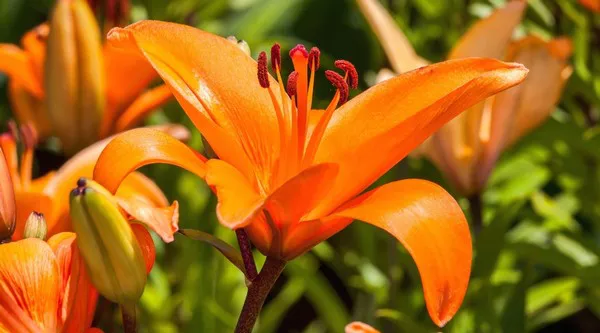Bees are essential pollinators in our ecosystem, playing a crucial role in the reproduction of countless plant species, many of which rely on these buzzing insects for their survival. To truly understand the intricate dance between bees and flowers, we must first delve into how a bee perceives and interacts with a flower.
The Spectrum of Colors in a Flower
To comprehend how a bee sees a flower, we must first consider the vibrant colors that make flowers so alluring. Flowers come in an array of colors, from the fiery reds and oranges of poppies to the soft pastels of lilies. While human eyes perceive these colors, a bee’s vision is adapted to a slightly different spectrum. Bees, like many insects, are trichromatic, which means they have three color receptors, sensitive to ultraviolet (UV), blue, and green wavelengths.
Ultraviolet Patterns: A Secret Language
One of the most astonishing aspects of how a bee sees a flower is their ability to detect ultraviolet patterns that are invisible to the human eye. Many flowers have intricate UV patterns, often resembling landing strips or bullseyes, which guide bees to the nectar source. These patterns serve as a secret language between the flower and the bee, directing the bee precisely where to land for optimal pollination.
Navigating by Polarized Light
Bees also have an extraordinary ability to navigate using polarized light. Polarized light patterns that occur in the sky are used by bees to determine the direction of the sun, even on cloudy days. This skill allows bees to efficiently locate and return to flowers in their foraging journeys.
The Importance of Shape and Size
Beyond colors and UV patterns, the shape and size of a flower play a significant role in how a bee interacts with it. Different bee species are attracted to specific flower shapes and sizes. For example, long-tongued bees are drawn to tubular flowers, while short-tongued bees prefer more open blossoms. The size of the flower also affects how accessible the nectar is to the bee, influencing the efficiency of pollination.
The Art of Landing
A bee’s approach to landing on a flower is a carefully choreographed sequence. As a bee approaches a flower, it uses its vision to gauge the distance and adjust its flight path accordingly. Bees are excellent at estimating the position of the flower, even while in flight, and can make mid-air corrections to ensure a smooth landing.
Nectar Guides: Signposts to Sweetness
Many flowers employ nectar guides, also known as “bee lines,” to direct bees to the nectar-rich parts of the flower. These guides consist of contrasting patterns, often lines or dots, that lead the bee to the flower’s nectar source. This adaptation ensures that bees efficiently collect nectar and transfer pollen, benefiting both the flower and the bee.
The Nectar Quest
Once a bee has landed on a flower, it begins the delicate process of collecting nectar. Bees have specialized mouthparts designed for extracting nectar from deep within the flower’s petals. As the bee forages for nectar, it brushes against the flower’s reproductive structures, transferring pollen and facilitating the process of pollination.
Detecting Aromas: The Fragrance of Flowers
While sight plays a crucial role in how a bee sees a flower, scent is another essential aspect of this interaction. Bees have a highly developed sense of smell, allowing them to detect the fragrances emitted by flowers. The aroma of a flower acts as a beacon, guiding bees to the source of nectar and pollen.
A Time for Foraging
The timing of a bee’s foraging activities is closely linked to the daily cycle of a flower. Many flowers open and release their nectar during specific times of the day, often synchronized with the activity patterns of their primary pollinators, such as bees. Bees are known to forage more actively during daylight hours when flowers are more likely to be accessible.
Return to the Hive
After successfully foraging nectar and pollen from a flower, a bee returns to its hive. Inside the hive, bees perform intricate dances to communicate the location of productive flowers to their fellow hive members. This remarkable form of communication enables the entire colony to maximize its foraging efforts and contributes to the pollination of a wide range of plant species.
The Circle of Life: Seed Production
Ultimately, the way a bee sees a flower is intimately connected to the survival and reproduction of both the flower and the bee. As bees collect nectar and pollen, they inadvertently facilitate the transfer of pollen from one flower to another, enabling fertilization and seed production in plants. This process ensures the continuity of plant species and the provision of food and resources for bees and other pollinators.
Conclusion
The intricate relationship between bees and flowers is a testament to the marvels of nature. Understanding how a bee sees a flower provides us with insight into the intricate mechanisms of pollination and the essential role that bees play in maintaining biodiversity and supporting our food supply. As we continue to study and appreciate this remarkable interaction, we gain a deeper appreciation for the delicate balance of our natural world and the importance of preserving it for generations to come.


